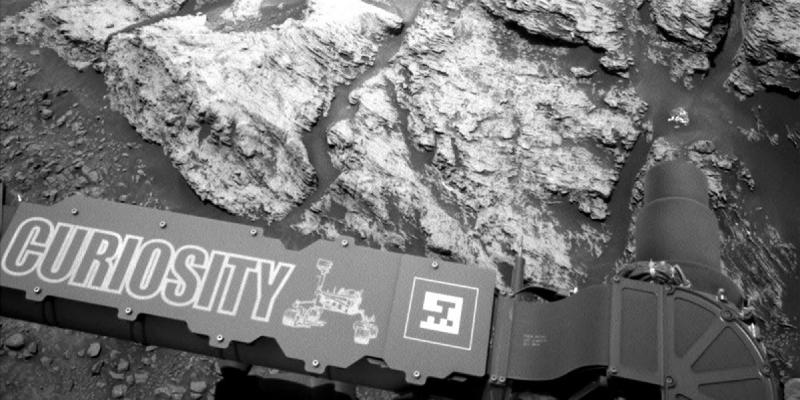NASA's Curiosity Mars rover detects 'unusually high' levels of methane



In a finding that has renewed talk about the possibility of life on Mars, NASA said Sunday that its Curiosity rover had detected "unusually high" levels of methane on the Red Planet.
Methane is an odorless, colorless gas that can be produced by simple geological processes as well as by microbes and other living organisms, so the new methane spike doesn't definitively prove that life exists or once existed on Mars.
"While increased methane levels measured by @MarsCuriosity are exciting , as possible indicators for life, it’s important to remember this is an early science result," Thomas Zurbuchen, associate administrator for the science mission directorate at NASA headquarters in Washington, said in a tweet on Saturday.
 This image illustrates possible ways methane might be added to Mars' atmosphere (sources) and removed from the atmosphere (sinks). NASA/JPL-Caltech/SAM-GSFC/Univ. of Michigan
This image illustrates possible ways methane might be added to Mars' atmosphere (sources) and removed from the atmosphere (sinks). NASA/JPL-Caltech/SAM-GSFC/Univ. of Michigan NASA said Curiosity scientists needed more time to analyze the new findings and to conduct additional methane observations. A spokesperson for the agency declined a request for more information.
Curiosity has detected methane many times since its arrival on Mars in 2012, but this is the most the rover has ever detected: 21 parts per billion by volume. That's three times higher than the previous record , Nature reported, though far below atmospheric methane levels on Earth .
Major sources of methane on Earth include the production and distribution of fossil fuels; cattle and other domestic livestock, which produce methane during the digestive process; and the decomposition of waste in landfills and wastewater treatment plants.
The rover's laser spectrometer device detected the methane while the car-size rover was parked at the Teal Ridge site within Gale Crater , a 96-mile-wide dry lake bed that was created millions of years ago by an asteroid impact. Curiosity was sent to the crater in part because its watery past makes it a likely spot to find evidence of past life on Mars.
Previously, Curiosity detected carbon-containing molecules in ancient sediments on Mars as well as seasonal shifts in the levels of atmospheric methane. In a commentary on those discoveries published last June in the journal Nature, Inge Loes ten kate, an astrobiologist at Utrecht University in the Netherlands, called the discoveries "breakthroughs in astrobiology."





NASA Rover on Mars Detects Puff of Gas That Hints at Possibility of Life
Proof positive that there were once politicians on Mars! My apologies, I could not help myself. Good article though.
I thought it was funny....
Methane is a simple carbon CH4 if I remember my organic chem correctly.
There's an abundance of methane on Earth but that doesn't mean there's intelligent life here......
The solution?
Send the martians rocketship loads of " Beyond Meat"!
Its time for them to go vegan!
The news is more likely evidence of another NASA budget request. NASA has a long history of hyping science for more public money. Whatever happened to OCO2?
NASA should have a higher budget. If it had the military budget, we might have had moon bases by now.
A $21.5 billion annual budget ain't exactly chickenfeed. That's almost double the Air Force's budget for aircraft procurement. And NASA receives additional funding from the military, too.
Whatever happened to the NASA Orbiting Carbon Observatory (OCO-2)? Did the hype live up to the $1.5 billion price tag? Will the third one finally deliver something useful?
$21.5B is drops in a bucket compared to a $650B military budget.
About $180 billion of that military budget is for payroll and health care. The military spends about as much on space activities as does NASA. And the military does provide some funding to NASA for payload delivery. NASA is a military contractor, too.
What happened to the NASA Earth Observing System? OCO-2 was only one of 17 space missions that were supposed to provide definitive answers about the changing climate. NASA has also conducted atmospheric programs that were promised to provide insights about the stratosphere and the changing climate.
The NASA Space Launch System will cost at least $7 billion to get the first rocket off the pad. Just so a handful of military trained astronauts can whiff Mars farts.
NASA is sucking money away from research that could have a real impact.
It is all of the cow and pig farts from earth...traveling on solar winds.